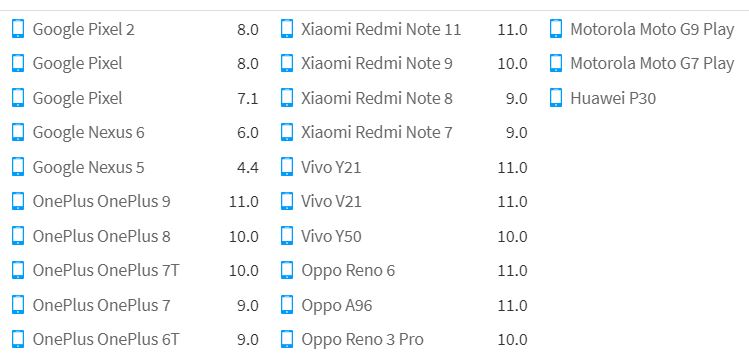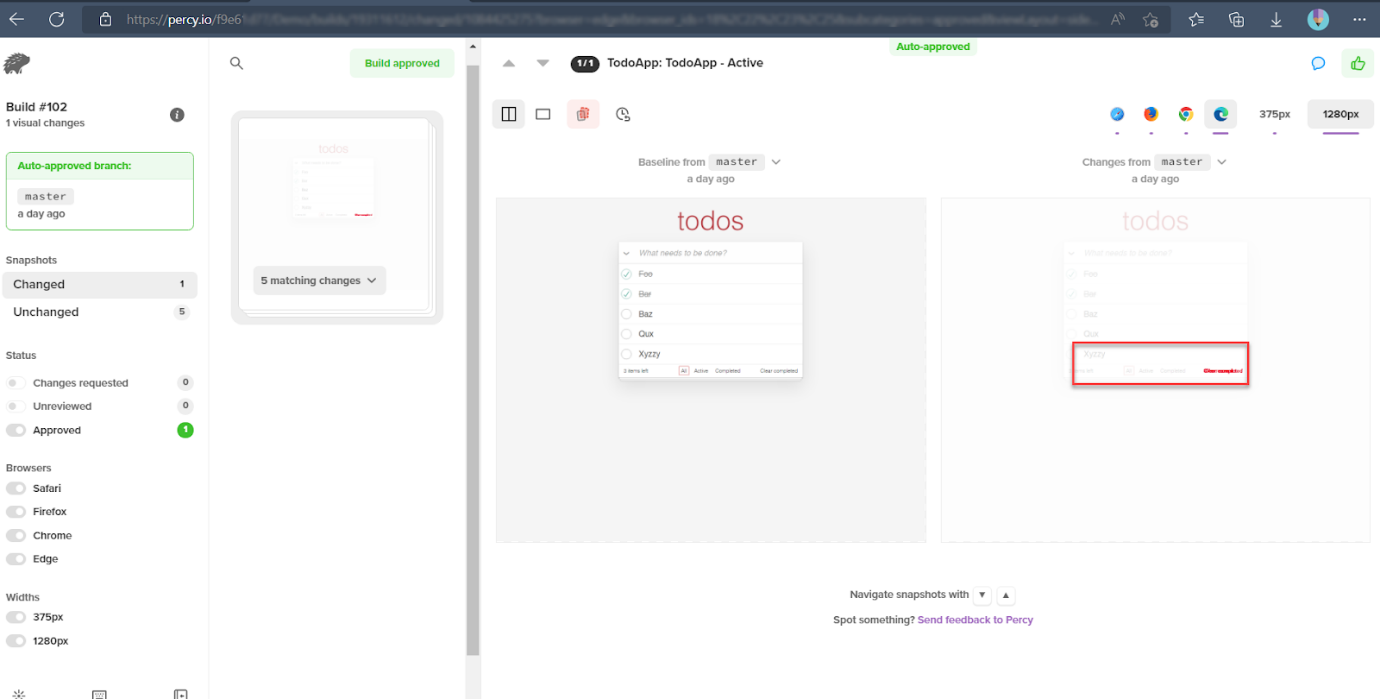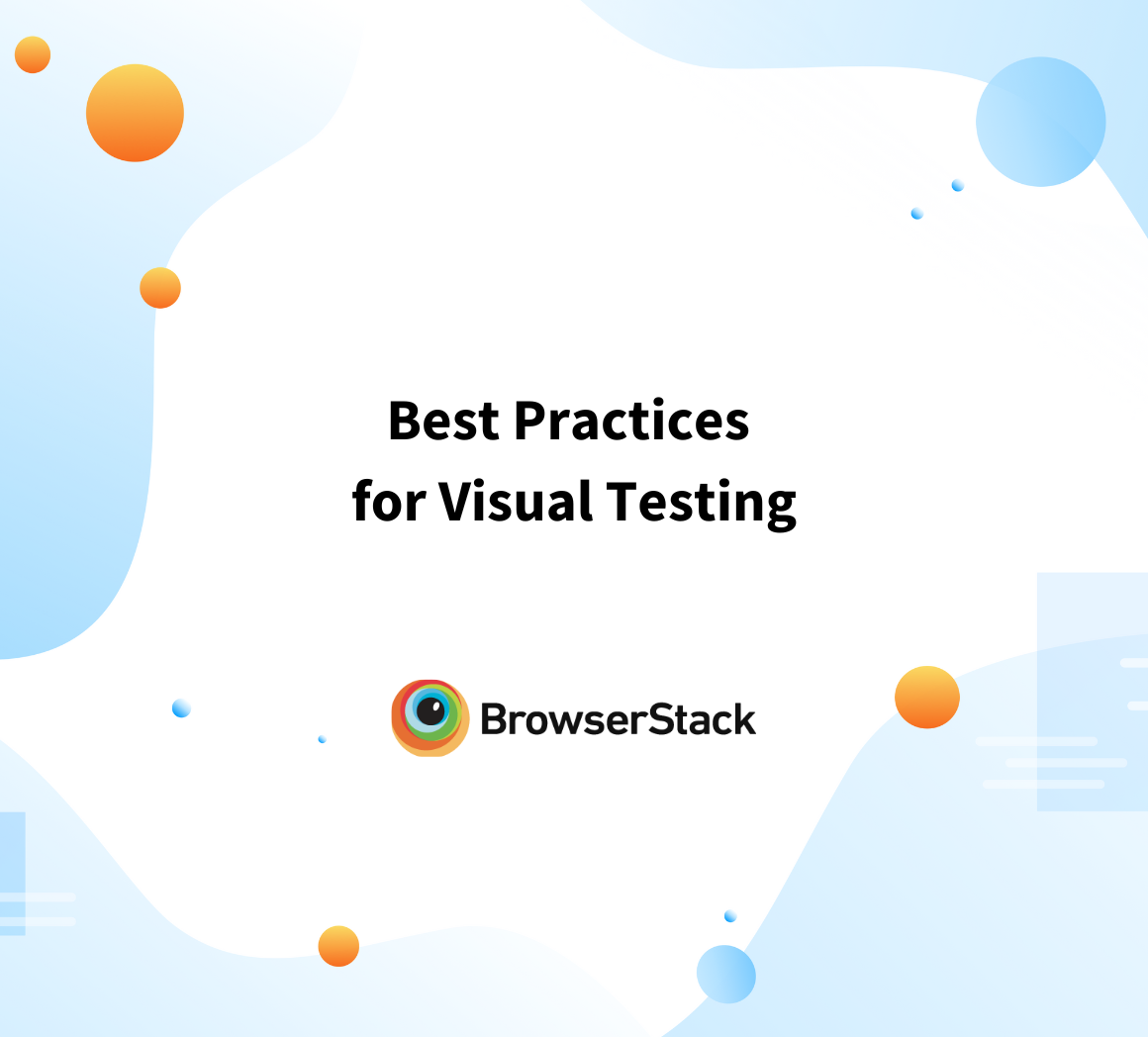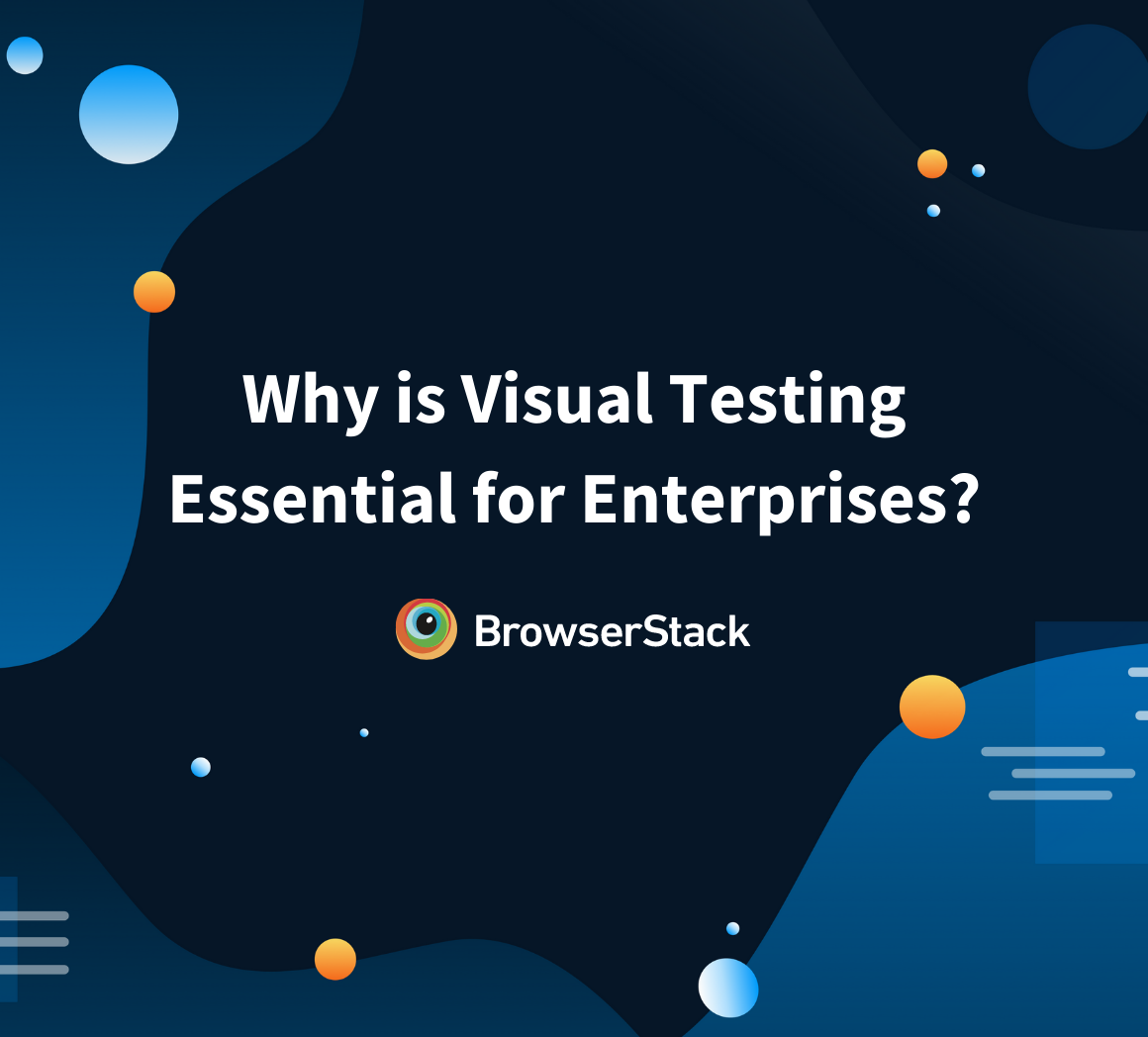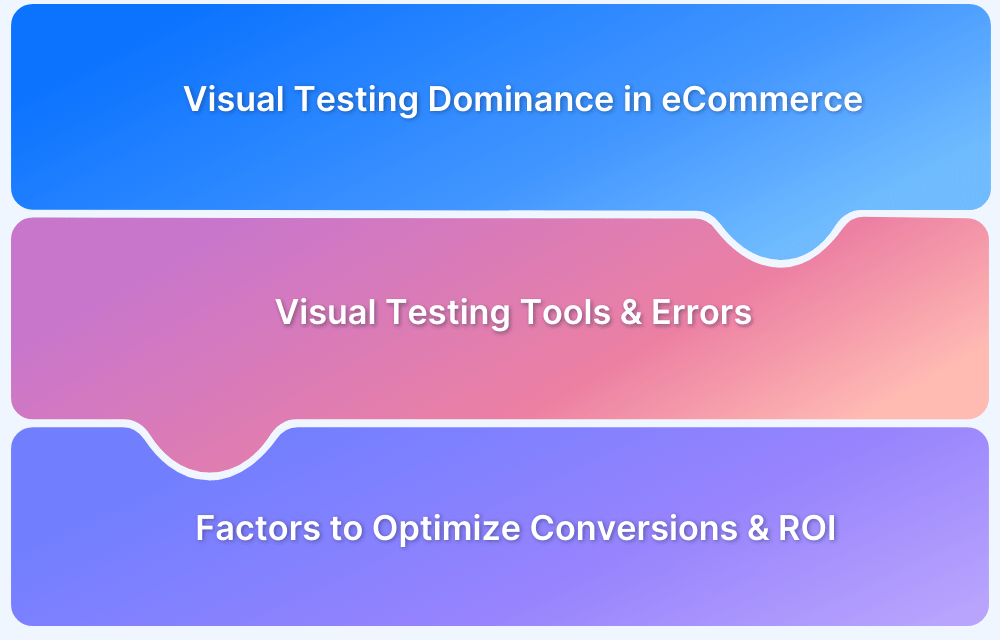Strategies to Optimize Visual Testing
By Sakshi Pandey, Community Contributor - October 30, 2024
A well-designed user interface attracts users and enhances their overall experience.
This is where visual testing plays a crucial role—it ensures that applications are free from rendering issues and that their visual elements align with the expected design specifications. It specifically targets aesthetic defects, such as size, position, and color inconsistencies.
Developers can enhance product quality, streamline deployment processes, and improve user satisfaction by implementing effective visual testing strategies.
What are Visual Testing Strategies?
Visual testing strategies are methods used to ensure the visual integrity of a software application across different devices, browsers, and screen sizes. They help identify visual defects and layout issues that could negatively impact user experience.
These strategies focus on the best methods to detect discrepancies, how an application responds to user interactions, and verify accessibility standards to accommodate users with disabilities.
Effective visual testing strategies are key to enhancing software quality, boosting user satisfaction, and minimizing the risk of visual bugs in production.
Importance of Optimizing Visual Testing Techniques
When trying to solve a problem or execute a task, it is very important to ensure the right tool is used to address it. For example, if you need to chop wood to build a fire, the tool of choice should be picked carefully. For lighter woods and smaller pieces, an axe would be optimal, however, for more dense woods and larger pieces, using a maul would be far more efficient.
Similarly, when planning the testing aspect of application development, it is pertinent to choose and employ the right strategies. If testing is carried out without strategizing, it could be highly inefficient, time-consuming, and cost prohibitive.
What to Focus on in Visual Testing?
Below are some important do’s when it comes to visual testing:
- Ensure detailed specifications for accurate automated visual tests.
- Start visual testing during unit testing to catch design errors early.
- Incorporate both static and dynamic visual testing in your strategy.
- Execute comprehensive visual tests for every screen, orientation, and device.
- Use specialized automation tools for efficient comparison across screens and devices.
- Include visual testing in your CI pipeline for early defect detection.
Read More: Top 17 Visual Testing Tools
What to Avoid in Visual Testing?
Here are some things that should be avoided in visual testing:
- Don’t merge visual testing into functional test automation to avoid inefficiency.
- Don’t rely solely on manual testing for complete visual validation; involve UX professionals.
- Don’t apply visual testing to applications without UIs or for internal-only use.
Popular Visual Test Strategies and Techniques
There are four facets that can be used to polish, optimize, and refine Visual testing: Automation, Parallelization, Coverage, and Testing with Real Devices.
1. Automation
Test Automation is used in practice to automatically review and validate the UI of an application and ensure that it meets predefined standards to optimize functionality and user experience. Automation reduces time, and effort, and mitigates human errors. The automation process ensures that repetitive tasks that need to be performed identically can be completed efficiently and in a timely manner.
However, there’s a common dilemma when using automation: Is the value provided by automating a certain process worth the time, effort, and labor, which could otherwise have been used for further development or other tasks?
Depending on the task at hand, the payoff for automation is generally well worth it. Particularly for visual testing, automation is normally highly helpful and reduces the human labor required to monitor and carry out extensive tests.
Automation frameworks such as Selenium, Cypress, Playwright, TestCafe, WebdriverIO, and Capybara can interact with web browsers easily. They also support integration with Percy to carry out more thorough visual tests. These frameworks can be used with a plethora of languages like Python, C#, Java, Perl, Ruby, JavaScript, etc., with Cypress working seamlessly when used with Node.js. Different automation frameworks can be evaluated and chosen based on the requirements and needs of the developers.
Automated visual testing tools such as BrowserStack’s Percy allow the user to perform snapshot comparisons against a baseline snapshot, identify visual inconsistencies across different popular browsers, and add visual testing to an existing workflow by integrating with pre-existing test automation frameworks or directly with the application. Automated visual testing can be seamlessly carried out before, after, or during functional testing or other code tasks by integrating with Percy.
2. Parallelization
In computer architecture, there is a concept called multithreading. This is the ability to run multiple tasks in a process at the same time, supported by the operating system. Multithreading greatly speeds up most applications’ run time and helps make them more efficient. There is a strategy similar to multithreading often employed in visual testing: Parallelization.
Parallelization is when several automated test scripts are run concurrently against various environment and device configurations, either locally or in the developer’s CI/CD pipeline. Parallel Testing is one of the best ways to speed up the automation testing process; For visual regression testing in particular, parallelization allows for:
- Testing on multiple device emulators or real devices.
- Testing across various different screen resolutions.
- Testing across multiple popular browsers.
- Running these tests for multiple UIs at the same time.
It’s simple to see why parallelization is a popular visual test strategy. If tests are run sequentially, it’s easy to see that it would take much longer to carry out testing without sacrificing the quality of tests. With parallelization, the time it takes to run all your tests will be equivalent to the length of your longest test.
Try it out yourself with the parallel test calculator.
3. Testing on Real Devices
When testing an application, the biggest challenge for any tester is ensuring that the application’s UI is functional and looks as it should across the large variety of devices, OS’, and browsers available. The number of possible combinations of these three factors makes it costly and very difficult for someone carrying out manual testing. Add onto this the number of new devices and OS plus browser versions released every year, and it becomes near impossible.
Now the easiest way to simplify this problem would be to sacrifice some device and OS combinations. And while it may not seem to be a big deal to cut out some of these combinations, there is a risk that the application might be nonfunctional for certain customers. This could, in turn, lead to a loss in revenue, and depending on the number of device/OS combinations sacrificed, this loss could be quite significant.
In order to address the problem of running tests that are able to cover all these device/OS combinations, there are two options:
Testing on emulators is generally not very conducive since emulators don’t always work and behave the way a real device might. Therefore testing with real devices is normally the best possible method to ensure the quality of your visual tests.
Use BrowserStack Real Device Cloud
When testing on real devices, the major caveat is that multiple software needs to be set up, the device needs to be configured, and it’s an overall tedious process. Thankfully there is a better option: using a cloud-based platform.
Browserstack’s Real Device Cloud offers testing on 3500+ Real iOS and Android Devices(Phones and Tablets), a few of which are pictured above.
Using Browserstack’s Real Device Cloud makes for a cost-effective and very comprehensive strategy to make more robust visual tests by ensuring that the UI is uniform across a wide range of OS/Real Device combinations.
Run Visual Tests on Real Devices
4. Testing on Mobile Browsers
While testing web applications on various browsers in a desktop environment is a shoo-in when it comes to quality assurance; Testing to determine whether the visual interface is consistent and renders well across different mobile browsers is more infrequent.
Percy bridges an important gap when it comes to web application testing on mobile browsers, it allows QA testers to carry out mobile browser testing. It supports Safari with iOS and Google Chrome with Android, with more mobile browser/OS combinations coming up soon.
Now, you might be thinking mobile browser testing is infrequent for a reason. What’s the need to carry out supplemental testing on mobile browsers when the web application looks fine on desktop browsers?
In 2022 58.62% of global web traffic was established to be mobile web traffic. As of July 2022, the mobile browser market share worldwide stands at 65.16% for Google Chrome and 24.22% for Safari, With Samsung Internet, UC Browser, Opera, and Android taking up the rest of the 10.62%.
The customer can form a negative impression of a web application at a glance, and with over half of the world’s web traffic coming from mobile web browsers, these statistics clearly demonstrate that mobile browser testing is an important aspect of quality assurance for any web application.
5. Coverage
Testing Coverage when carrying out visual testing is imperative to ensure that a sufficient consumer pool is able to access and successfully utilize the application. While testing, there can be a great loss of revenue and customers downstream without sufficient coverage.
Running scripts against several environmental conditions helps the developer obtain a clear picture of how well the application functions across different OS and devices. This process is especially important for visual testing, where the developer needs to make sure the app looks and functions as designed across all operating systems, screen sizes, and screen resolutions.
Visual testing adds another much-needed layer of test coverage to the pre-existing functional tests by also ensuring that the UI visible to the customer doesn’t have any visual regressions present during and after application development.
Percy is a prime visual testing tool, which provides coverage across several popular web browsers and is capable of comparing snapshots and highlighting any visual bugs.
Conclusion
The strategies listed above can greatly assist and optimize visual testing procedures.
The technique to successfully design and execute visual tests centers around determining the needs of the application and, of course, the desired customer.
If the aim is only to make the application available on an iPhone 7 with an iOS 15.6 only on a Google Chrome browser, then there is no real need to carry out testing on a large scale across various device and OS combinations.
It would be best to use Automation and Parallelization to increase the efficiency of the visual testing. However, coverage and testing across real devices don’t need to be taken into consideration. To conclude, when planning out visual testing of an application, the chosen visual test technique needs to be bespoke, and utilizing some of the strategies described above should greatly aid in building robust and solid visual tests.

